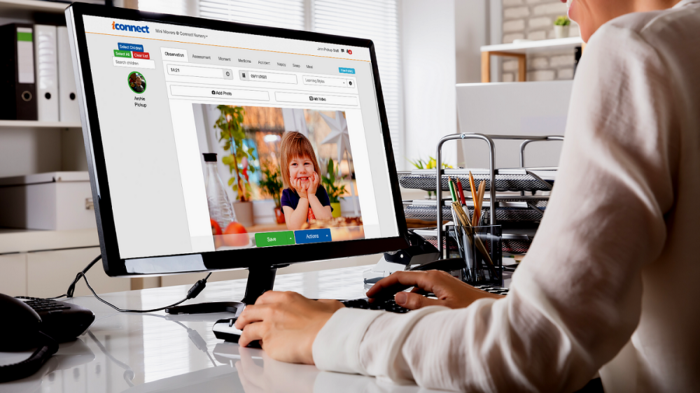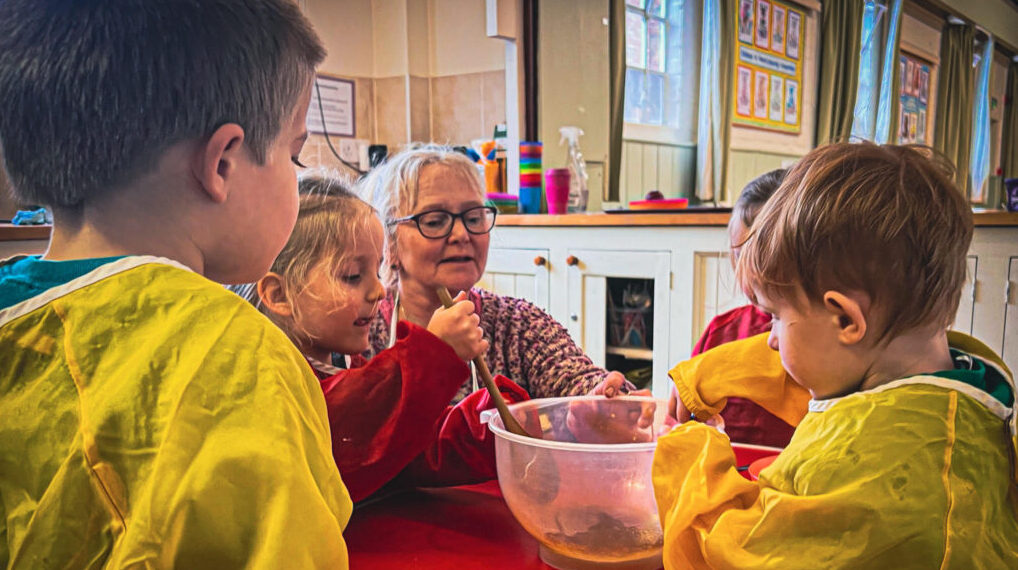We chat to outdoor play expert Claire from Creative Play, who shares how imaginative play can support early years development…
Unlock the secrets of software
As more and more nurseries turn to digital platforms, Charlotte Goddard uncovers some of the lesser-known ways technology can help early years settings

Nursery managers and practitioners don’t need to worry about losing out to robots quite yet – if there’s any job which still requires the human touch, it’s guiding children through their earliest learning and development. However, digital technology can certainly make nursery managers’ jobs a whole lot easier.
Digital providers are finding that nursery managers are increasingly confident in their use of technology and tend to be moving from one system to another rather than taking their first steps away from paper, says Lauren Foley, product development manager at online learning journal Tapestry.
“It’s been interesting seeing the shift over the last 10 years,” she comments. “In the early days most of the people coming to us were coming from paper. Although we do still get someone coming from paper every so often, we have a large proportion coming from other software providers.”
Observation and planning have been the main drivers behind technology adoption, as settings sought to cut down on paperwork, while communication with families was a big draw during the pandemic. “We started using Tapestry after we found we couldn’t evidence our two-way partnership with parents for Ofsted,” says Angela Franco, manager of Our Lady’s Preschool Northfleet in Kent. “We started using it for observations, allowing parents to read and comment, and also to send out parent newsletters – we were using a lot of ink and paper, and parents were not reading them, whereas now we make sure they are all on the app.”
However, most recently nursery managers are turning to technology to digitalise day-to-day management administration. “We have a booking system so you can record and track which children are coming to which session, see things like planned absences and how many children are in at any given time,” says Foley. “Online and printable registers based on booking data can be configured to suit each setting.”
Although nurseries are becoming more aware of how technology can help them in some areas, other features are slower to be adopted. Rob Fox, owner and manager of Happy Bunnies Nursery School on the Hertfordshire and Cambridgeshire border, says he’s still discovering new applications. “We use Famly for so many things – tracking whether parents have paid their invoices, recording information about children such as how long they have slept, scheduling staff meetings and sending newsletters to parents. But there is stuff in there that I am still discovering, such as incident and accident forms, and two-year-old checks.”
“We don’t use accident forms, those are still on paper,” says Franco. “Tapestry has a training function and we haven’t used that yet, because we currently access CPD through the local authority – but the next time we are organising training we might look at that.”
Providers say payment systems are one of the lesser-known features of digital platforms. “Traditionally parents have paid through many different ways, whether that is direct debit, bank transfer, credit cards, and it can be very complicated,” says Matt Arnerich, director of brand and communications at Famly. “Parents can pay through the Famly app with one click, which saves so much time.”

John Pickup, Connect Childcare’s head of new business, highlights Connect Cashflow, a contactless payment method that allows nurseries to take instant card payments and collect direct debits from parents. “Given the payments are automatically reconciled against the bill, this can decrease settings’ admin time by up to 80%,” he says.
Apps can save time when it comes to everyday admin tasks like permission forms, says Arnerich. “Parents can respond quickly to give permission for a child to have Calpol, or have their picture shared online,” he says. “In the past that information has often been hidden in spreadsheets, but now if you need to do a photo shoot for the website for example, you can do a quick check in a child’s profile, or pull up a list of which children can be photographed.”
Home learning in the early years is a priority for the government, which is funding training for practitioners to support parents with the home learning environment. “There is a feature within Connect Childcare’s ParentZone app which supports parents with home learning,” says Pickup. “It allows families to continue to contribute to their child’s learning journey during closures by adding observations from home, and it’s always worth nurseries shouting about this to families, to help further strengthen practitioner/parent relationships and foster a holistic approach to children’s learning.”

Tapestry’s Activities tool also gives practitioners a chance to engage families with home learning that builds on what the child is learning at nursery.
Tapestry’s Reflections tool is growing in popularity. “It allows staff to record thoughts they have about an individual child’s development, or on a wider level – ‘I’ve noticed only boys are in the sandpit, why aren’t girls getting involved?’,” says Foley. “Time is so tight for practitioners they often don’t have time to speak to each other in the setting, so being able to record these thoughts in an online system means the other practitioners have the opportunity to respond when they have the head space.”
Cherry Garden, an assessment framework for children with learning differences, is another new tool which is gathering momentum, she adds. Technology can also help settings communicate with parents who don’t speak English, or who prefer to receive information in their own language.
“Working with Google Translate we introduced a feature which allows parents to set their preferred language and have the text translated at a click of a button,” says Arnerich.
Given the explosion of AI-powered technology, and the growth of a competitive software sector, it’s likely that the future will see even more features offered by digital platforms. Foley says the main requests from nurseries are around account balances, finance reports and parent views. Tapestry is also developing a direct messaging tool to reduce the number of systems parents have to use to communicate with staff.
“We are a pack-away setting in a village hall, so an opening and closing checklist would be useful,” says Fox. “It would also be good to see more integration between the local authority funding portal and the nursery management software; I don’t think anyone offers that at the moment.”
“It would also be great if it could do my washing up and make the snacks,” he smiles.
Latest Features
The roll-out of new innovations doesn't always go to plan. Ben Case, education advisor at childhood education platform Tapestry, sets…
We discover how RafaKidz Medmenham transformed its outdoor space




